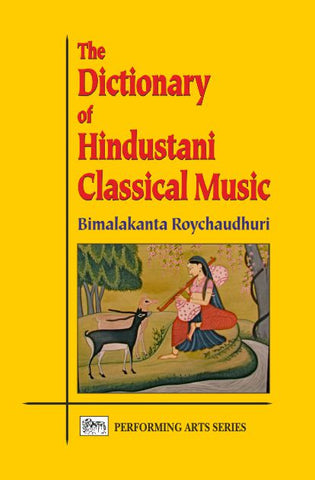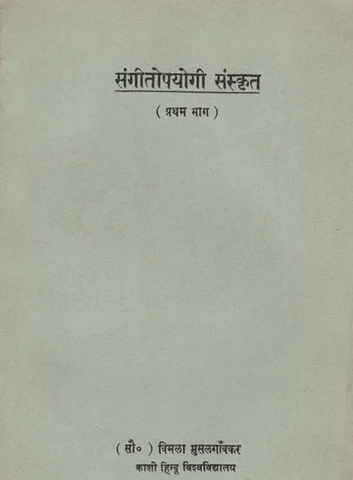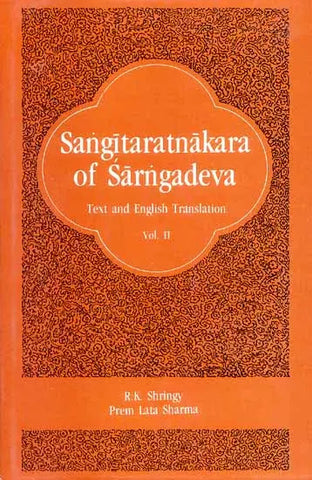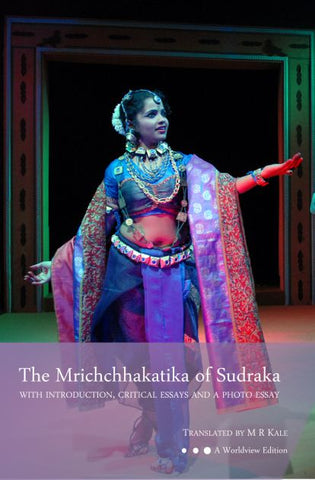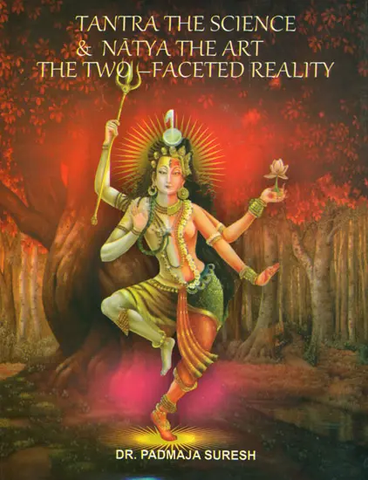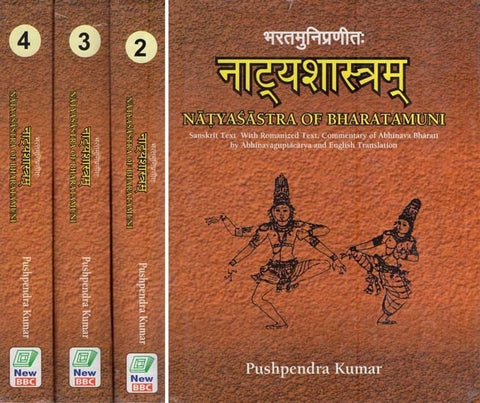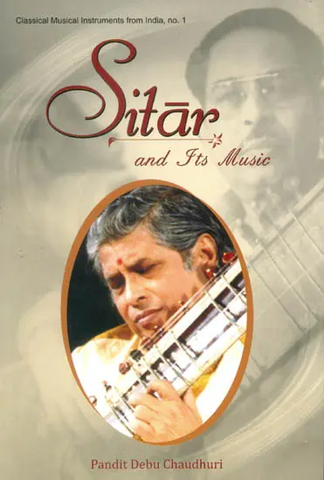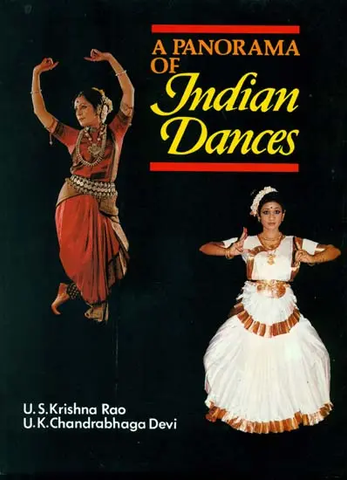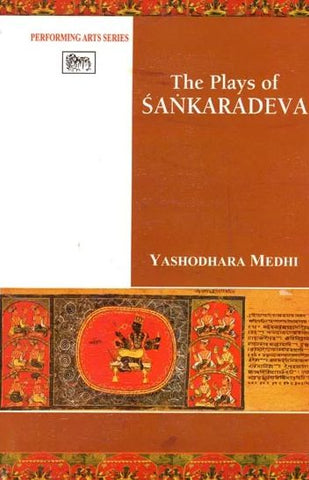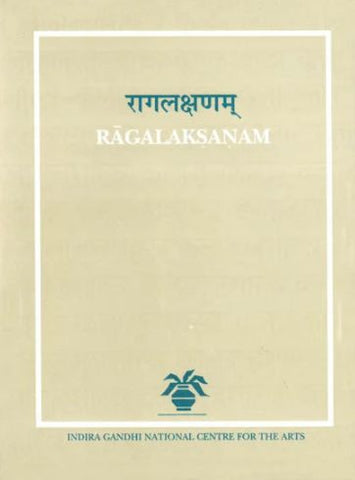Your cart is empty now.
Since India's independence in 1947, the birth centenary of no other poet or artist has been celebrated on such a scale, and with such enthusiasm, as that of Rabindranath Tagore in 1961. The Government of India pulled out all stops to mark the centenary, allocating very substantial resources to well-coordinated commemorative activities all over the country. It is owing to this centenary that many State capitals in India came to have their own Rabindra Bhavans, venues for the presentation of music, dance, and drama, and for the exhibition of the visual arts, at a time when such facilities were lacking in most cities. Festivals of arts based on Tagore's work, and a series of special multilingual radio programs and publishing projects brought to literate India, at the very least, a sense of the poet's spreading genius.
Sangeet Natak Akademi, not yet ten years old at that time, made its own distinctive contributions to the nationwide celebrations. In Delhi, it organized an all-India theatre festival based on Tagore's literary corpus, in which new productions specially commissioned for the event were featured. Some of these eventually acquired the status of classics. The Akademi also brought out two quality publications to mark the centenary: a special number of the Sangeet Natak Akademi News Bulletin, and a volume of Rabindranath's songs in staff notation, titled Swaralipi: Anthology of One Hundred Songs of Rabindranath Tagore.
The first publication, though brought out as an issue of the Akademi's Bulletin, was in fact a finely edited and handsomely produced volume of writings on various aspects of Tagore's creative output in music, dance, and drama. The contributions were by authorities on Tagore's work in these arts, and had been specially commissioned for the commemorative issue edited by Kshitis Roy and Pulinbihari Sen. This publication had continued to be in demand, therefore the Akademi decided to bring it out afresh in book form in 2006, under the title Rabindranath Tagore: A Tribute. The book, with all its original contents intact, including rare photographs and drawings, has been welcomed by old and new readers.
We take renewed pleasure in offering to those attracted to Rabindranath's songs a new edition of the Swaralipi of one hundred songs published in 1961. Publication of the original two-volume anthology (of which only the first volume appeared in 1961) was a project inspired by the need to make available to the international audience a guide to performing Rabindranath's songs. It was a difficult project, inasmuch as it meant making a representative selection of Tagore's songs which should also be acceptable to the leading authorities on Tagore's music at that time; and then rendering the songs in a modified Western staff notation with the character of the music intact. The first challenge was overcome with the participation of Indira Devi Chaudhurani in the project, and seniormost 'custodian' of Rabindranath's songs at that time, and a highly respected figure in Santiniketan, as well as in Bengal's cultural life. (Unfortunately, Indira Devi did not live to see the book in print, passing away in 1960) The task of notating the songs using staff notation was accomplished under the guidance of Professor Antsher Lobo, one of India's leading academic figures in Western music at the time. Kshitis Roy translated a good many of the songs into English, while Professor Dhurjati Prasad Mukerji, the well-known sociologist and musical thinker, contributed the valuable introduction reproduced in this new edition. The foreword to the 1961 volume by Kamaladevi Chattopadhyay, then Vice-Chairman of Sangeet Natak Akademi, is also reproduced here. The notations and translations are reproduced in toto.
The first fifty songs in this new edition were included in Volume I of the anthology published in 1961; Volume II, consisting of the next fifty songs, was published in 1967. a second version of the anthology in Devanagari script, employing a system of notation developed by Sangeet Natak Akademi in consultation with experts (to which Dhurjati Prasad Mukerji refers at para iv in his introduction) was also published in 1961, under the title Rabindranath Thakur ke Sau Geeton ka Swaralipi-baddha Sankalan (Volume I). However, the new notation used in this version, which was expected to serve as a uniform system of notation for the whole of India, could not meet that objective. Therefore the second volume of the Hindi version was eventually not published by the Akademi.
Both Volume I and II of the anthology in staff notation have been out of print for many years. The two volumes are combined in this new edition. We hope the book will be welcomed by musicians and others drawn to Rabindranath's work both in India and abroad.
From the Jacket
"Well-versed in both Western and Indian music, [Indira Devi Chaudhurani (1873-1960)] had the advantage, as the Poet's favorite niece, to have an intimacy of contact with the musical genius of her uncle. As a matter of fact, right up to the late nineties of the last century, she was the faithful and steadfast custodian of Rabindranath's songs Then, towards the fag-end of her life she came and settled down at Santiniketan. The Poet was no more but his songs lived. They lived in all their vibrant beauty of melody because she came and lived at Santiniketan and became a link between the old and the new."
Rabindranath Tagore has passed into one of India's legendary songsters like Jayadev, Surdas, Kabir and Mira. But even more, his songs and music have passed beyond the frontiers of this country. His songs have found an international place among the musicians and music lovers of the world One hundred songs have been picked out [in this book] of the almost countless songs running into thousands, which the Poet composed. They are not presented here as the best of the Poet's songs but as very representative of his creation. The Anthology, therefore, consists of devotional songs, seasonal songs, patriotic songs, festival songs, songs of diverse human emotions, and songs about the common man. This publication of the Sangeet Natak Akademi is timely and will meet the rising need of the hour, the growing hunger of the different peoples of the world to know and understand one another through their best self-expression in the field of fine arts, especially music.
Foreword
By Kamaladevi Chattopadhyay
Rabindranath Tagore has passed into one of India's legendary songsters like Jayadev, Surdas, Kabir and Mira. But even more, his songs and music have passed beyond the frontiers of this country. His songs have found an international place among the musicians and music lovers of the world.
It is, therefore, very appropriate that the National Sangeet Natak Akademi should publish this Anthology of some of his songs on the occasion of the Tagore Centenary Celebrations under the title of "Swaralipi". Because of their universal appeal, these songs are presented in Staff Notation to make them easily renderable to anyone in any part of the world.
One hundred songs have been picked out of the almost countless songs running into thousands, which the Poet composed. The late Srimati Indira Devi Chaudhurani of Santiniketan made the selection and is also responsible for the classification into subject groups and for serializing the order according to their form and style. They are not presented here as the best of the Poet's songs but as very representative of his creation. The Anthology, therefore, consists of devotional songs, seasonal songs, patriotic songs, festival songs, songs of diverse human emotions, and songs about the common man. The Anthology is published in two volumes of fifty songs each.
The English rendering from the Bengali of thirty-three songs in Volume I has been done by Shri Kshitis Roy, while the remaining translations have been taken from journals and papers like Visvabharati, and Macmillan's Publications.
While the international system of staff notation is used, an occasional diacritic sign is made to indicate the essential modal character and intonation (Sruti) of Indian music. Fractional bar lines of different sizes are also employed to express the characteristic and typical Indian time signatures which call for fractional bars (Sama, Tali, and Khali) to indicate the comparatively less stressed beats of sub-divisional bars within the time cycle (Tala). Professor Antsher Lobo's advice and guidance in this notation have been very valuable at every stage.
The Bengali text in Roman characters given under the notated music generally follows the phonetic method of Professor Suniti Kumar Chatterji in his "Bengali Self Taught", but as slightly modified by Dr. Arnold Bake in his book "Twenty-six Songs of Rabindranath Tagore", and is based on the Marlborough system of phonetics.
This publication of the Sangeet Natak Akademi is timely and will meet the rising need of the hour, the growing hunger of the different peoples of the world to know and understand one another through their best self-expression in the field of fine arts, especially music.
It is good to know that a list of one hundred Tagore songs had been selected for this Anthology by the late Srimati Indira Devi Chaudhurani of Santiniketan at the request of the Sangeet Natak Akademi. The selection was done a few days before her death. There was a time when the late Dinendranath Tagore, the doyen of Tagore’s musicians, had a friendly discussion with Indira, Devi and told her that his knowledge of Tagore’s songs was more or less complete; Indira Devi slightly differed and said that her knowledge was a little more. Later on, they came to terms: Dinendranath’s knowledge was complete about the recent compositions but Indira Devi’s was better of the past. It is true that Indira Devi knew Tagore’s early songs best and that, after Dinendranath’s death, she too probably knew best the later ones. So her selection of a hundred songs Tagore had reasons to be the most sensible so far.
As far as I am aware, the only systematic attempt made so far to acquaint the Westerners with the songs of Rabindranath Tagore set in his distinctive melodies, was in the Twenty-six Songs of Rabindranath Tagore, jointly edited in 1935 by Dr. Arnold A. Bake and Dr. Philippe Stern. But, a mere twenty-six songs, out of more than two thousand five hundred lyrics that Rabindranath Tagore composed and set to music, can hardly be considered adequate or representative of his creative output in this field. Therefore, a demand has steadily been growing in the West for more of Tagore songs in their authentic melody. Consequently, there has also been a desire that since in these lyrics the sense is so separately wedded to sound, mere transcribing the melodies in staff notation may not suffice if the basic spirit of the song-its meaning-is not made available in translation.
It was in order to meet this general demand on the part of non-Bengali-knowing elements in India and abroad, that the Sangeet Natak Akademi accepted a scheme for propagating the music of Tagore on the occasion of the Tagore Centenary Celebrations.
The very first consideration was, of course, to make a representative selection out of the great wealth of Tagore songs. The selection had to be such that the songs would represent the broad subjects dealt with by Tagore viz. devotional songs, love songs, seasonal songs, patriotic songs, occasional songs, etc. The songs had to set forth his distinctive technique of adaptation of classical and folk elements of Indian music. Lastly, the selected songs had also to bring out that experimental streak, that bold break with tradition which constitutes the truly Tagorean feature of Tagore’s music.
The task was not an easy one and the Akademi would have been hard put to it if a person like Indira Devi Chaudhurani was not there to lend a hand. She was more than equal to her task. Well-versed in both Western and Indian music, she had the advantage, as the Poet’s favorite niece, of having an intimacy of contact with the musical genius of her uncle. As a matter of fact, right up to the late nineties of the last century, she was the faithful and steadfast custodian of Rabindranath’s songs. It was only when the vision of the ‘forest school’ called the Poet away to Santiniketan, that Dinendranath Tagore took over where Indira Devi had to give up. Not that her interest ever flagged nor was she for long out of touch. Then, towards the fag-end of her life, as if to make up for all the lost time, she came and settled down at Santiniketan. The poet was no more but his songs lived. They lived in all their vibrant beauty of melody because she came and lived at Santiniketan and became a link between the old and the new.
The task of selection over, the Akademi set about the next logical follow-up action and decided that :
i. There should be two volumes of fifty songs each.
ii. Each volume should be brought out in two different versions-
(a) One for Westerners and (b) the other for non-Bengali-knowing Indians.
iii. The volume meant for Westerners should have the Bengali words written in Roman characters below the staff-notation. To help those interested in getting into the spirit of the songs, there would be sense-translation in English given after the notation.
iv. In the volume meant for the non-Bengali-knowing Indians, the original Bengali songs will be given in Devnagri script, and the system of notation will be the same as evolved by the Akademi in consultation with experts.
Can we summarise these hundred songs? At most, we can have three ways of doing it: musically, graphically, and through words and notes. I believe that musically these songs should be rendered in the most musical manner possible, that is, by notation with the help of vowels alone. Even the consonants will have to be excluded. In that case, the combination will be of ragas and ratings, the taels (rythms) being used as basic, simple accompaniments. The ragas and raginis are thus of numerous types, pure and very many of the impure varieties. Strictly speaking, that will be of the ideal type. But an important difficulty stands in the way: chronologically, it is unlikely to fit in with the musical classification. While it is true that the earlier pieces are likely to be the pure ones and attached to Chautal, Dadra, Tiwara time-cycles, etc. the later ones will be of infinite variety beginning with the mixture of two, three, and four original compositions; two originals and baul, bhatiali, kirtan and pure indigenous styles. In addition, Tagore creates an entirely new mode though it is linked up with the Indian mode in spirit. In that case, musical classification becomes difficult indeed. We will have to exclude a good many of them if we are to include the purely musical classification.
The second choice is the graphical classification. Here I mean the rendering of pictorial representation. In a sense that is possible; pictures can be arranged by some shape or the other, either historically or by North and South regions or in terms of ideational groups. But the same danger appears again. Pictures are too numerous to mention and a good many of them are likely to be dropped out of the classificatory mould. For aught one can see the dangers of the graphical classification are greater than those of the musical one. The visual actions appear, in this age at least, to be stronger than the audible actions.
The third and final choice of classification is a composite one but with emphasis on the exposition of words and notes as diphthongs. In a sense, all Tagore’s music is like that. There are a few songs where the combination of notes is more stressed than in words, and a large number, in addition, emphasize words, more than notes. But in no case are the words separate from the notes. Out of two thousand five hundred songs or so the overwhelming majority bear the requisite combination of words and notes. And of these hundred songs, they are of devotional rejoicing; and of summer, rains, autumn, hemanta (mists), winter, and spring, the six classical seasons. Then they are of Nataraja, that is Shiva, songs glorifying the common man, love for the tiller of the soil and the manual labourer, songs of youth and the Poet’s love for his native land and his vision of the country-side, and above all, love songs. There are at least four words set to various classical tunes, two as experiments in new rhythms and four on rejoicing. Personally, I feel that the experiments should have been longer because a thousand of them come out and at least a hundred come out beautifully. Barring the devotional pieces the best of them are seasonal from the point of view of a combination of words, pictures, and notes.
I strongly feel that only a hundred examples are not sufficient. A few more pieces I may have missed, but even one of these hundred I would never delete. If so, can we improve on Shrimati Indira Devi Chaudhurani’s selection?
| Publisher's Note | 5 | |
| Foreword | 7 | |
| Introduction | 9 | |
| Acknowledgments | 12 | |
| The Staff Notation | 13 | |
| Transliterations | 17 | |
| Songs (1-50) | 27 | |
| DEVOTIONAL | ||
| 1 | Aji momo momo cache jibonobondhure | 27 |
| 2 | Shudhasagortire he | 29 |
| 3 | Mondire momo ke ashile he | 32 |
| 4 | Nibir ghono andhare | 34 |
| 5 | Ontoro momo bikoshito koro | 37 |
| 6 | Je-keho more diyecho shukh | 40 |
| 7 | Jibon jokhon shukaye jay | 43 |
| 8 | Oi ashon-toler matir | 46 |
| 9 | Ache dukhkho, ache mrittu | 50 |
| 10 | Dukhkher timire jodi jole | 52 |
| 11 | Je dhrubobopodo diecho bandhi | 54 |
| 12 | Bhengecho duar, eshecho jotirmoy | 56 |
| 13 | Aji pronomi tomare, colibo, nath | 59 |
| SEASONAL | ||
| 14 | Darun ognibane | 62 |
| 15 | Shangon-gogone ghor ghonoghota | 64 |
| 16 | Badol-baul bajay re aektara | 67 |
| 17 | Esho nipo bone chayabithitole | 69 |
| 18 | Amra bendhechi kasher guccho | 72 |
| 19 | Ei shorot-alor komol-bone | 76 |
| 20 | Hay Hemontolakhkhoi, tomar noyon kaeno dhaka | 78 |
| 21 | Himer rate oi gogoner dip-gulire | 81 |
| 22 | Shiter haoar laglo nacon | 84 |
| 23 | Aji boshonto jagroto dhare | 86 |
| 24 | Ore bhai, phagun legcche | 89 |
| LOVE | ||
| 25 | Boro bedonar moto bejecho tumi he | 92 |
| 26 | De pore de amay tora | 95 |
| 27 | Amar poran jaha cay | 97 |
| 28 | Tumi jeyo na ekhoni | 99 |
| 29 | Rodon-bhora e boshonto | 101 |
| NATIVE LAND | ||
| 30 | He mor citto, punno tirthe | 104 |
| 31 | Jodi tor dak shune keu na ashe | 110 |
| 32 | Oyi bhubon-monomohini | 114 |
| 33 | O amar desher mati | 117 |
| 34 | Ore, nuton juger bhore | 120 |
| MISCELLANEOUS | ||
| Commemoration | ||
| 35 | Moron-shagor pare tomra omor | 122 |
| Inauguration | ||
| 36 | Shobare kori ahbhan | 124 |
| Village Road | ||
| 37 | Gram-chara oi ranga matir poth | 126 |
| Inauguration | ||
| 38 | Matri-mondir-punno-onggon | 128 |
| Invocation to Buddha | ||
| 39 | Hinshay unmotto priththi | 131 |
| Invocation to Nataraj | ||
| 40 | Nritter tale tale notoraj | 136 |
| Songs of youth | ||
| 41 | Amra nuton jouboneryi dut. | 146 |
| 42 | Shongkocer bibholota nijere opoman | 149 |
| On Machine | ||
| 43 | Nomo jontro, nomo-jontro, nomo- | 152 |
| Morning Song | ||
| 44 | He cironuton,aji e diner prothom gane. | 155 |
| Inauguration | ||
| 45 | Shubho kormopothe dhoro nirbhoy gan. | 158 |
| House warming | ||
| 46 | Esho he grihodebota | 161 |
| Vanamohatsav | ||
| 47 | Ai amader ongone | 164 |
| Holi | ||
| 48 | Ore grihobashi, khol ddar khol | 167 |
| Morning Song | ||
| 49 | E din aji kon ghore go khule dilo ddar | 169 |
| Commemoration | ||
| 50 | Kon alote praner prodip. | 172 |
| Songs (51-100) | ||
| DEVOTIONAL | ||
| 51 | Shopon jodi bhangile rojoni probhate | 179 |
| 52 | Duare dao more rokhiya | 181 |
| 53 | Bipoda more rokhkha koro | 183 |
| 54 | Aguner porosh moni chonao prane | 187 |
| 55 | Anondo tumi shshami, monggol tumi | 191 |
| 56 | Ami kan pete roi amar apon | 193 |
| 57 | Ami tarei khunje baeray je roy | 196 |
| SEASONAL | ||
| 58 | Esho, Esho, Esho he boishakh | 200 |
| 59 | Jhor-jhor borishe baridhara | 203 |
| 60 | Bojro manik diye gantha | 206 |
| 61 | Shoghono gohono ratri | 210 |
| 62 | Oge shephali boner moner | 213 |
| 63 | Shiter bone kon she kothin ashbe bole | 218 |
| 64 | Boshonte phul ganthlo amar | 220 |
| 65 | Aji dokhkhin pobone | 223 |
| PATRIOTIC | ||
| 66 | Ebar tor more gange ban esheche | 226 |
| 67 | Jonogono momo odhinayoko joyo he bharoto bhaggo bidhata | 228 |
| 68 | Sharthok jonom amar jonmechi ei deshe | 230 |
| FESTIVAL | ||
| 69 | Moru bijoyer keton urao shunne | 234 |
| 70 | Aek din jara merechilo tanre giye | 238 |
| 71 | Komol boner modhupo raji | 240 |
| 72 | Je toronikhani bhashale dujone | 242 |
| 73 | Premer milon dine sotto shakhkhi jini | 244 |
| FELLOWSHIP | ||
| 74 | Oi Mohamanob ashe | 246 |
| 75 | Jethay thake shobar odhom diner hote din | 248 |
| 76 | Shobar majhare tomare shshikar koribo he | 251 |
| 77 | Ei to bhalo legechilo | 257 |
| 78 | Phire col matir tane | 263 |
| 79 | Amra cash kori anonde | 266 |
| 80 | Ayre more phoshol kati | 269 |
| 81 | Jini shokol kajer kaji | 273 |
| 82 | Shob kaje hat lagai more | 275 |
| 83 | Ore Ay re tobe matre shobe anonde | 277 |
| 84 | Baertho praner aborjona puriye phele | 279 |
| 85 | Joy hok, joy hok nobo orunodoy | 283 |
| 86 | Coli go, coli go, jai go cole | 285 |
| MOTHERLAND | ||
| 87 | He nuton, Daekha dik arbar jonmer | 288 |
| 88 | Ei kothati mone rekho | 290 |
| 89 | Abar jodi iccha koro | 294 |
| LOVE | ||
| 90 | Tumi robe nirobe hridoye momo | 297 |
| 91 | Mori lo mori, amay banshite dekeche ke | 300 |
| 92 | Amar praner pore cole gaelo ke | 304 |
| 93 | Tobu mone rekho jodi dure | 308 |
| 94 | Ami tomar shongge bendhechi amar pran | 310 |
| 95 | Amar ki bedone she ki | 314 |
| 96 | Aemon dine tare bola jay | 320 |
| 97 | Premon joyare bhashabe donhare | 323 |
| 98 | Aji shorot-topone probhat shshopone | 325 |
| 99 | Amar praner majhe shudha ache, cao ki | 329 |
| 100 | Bhalobeshe, shokhi, nibhrite jotone | 333 |
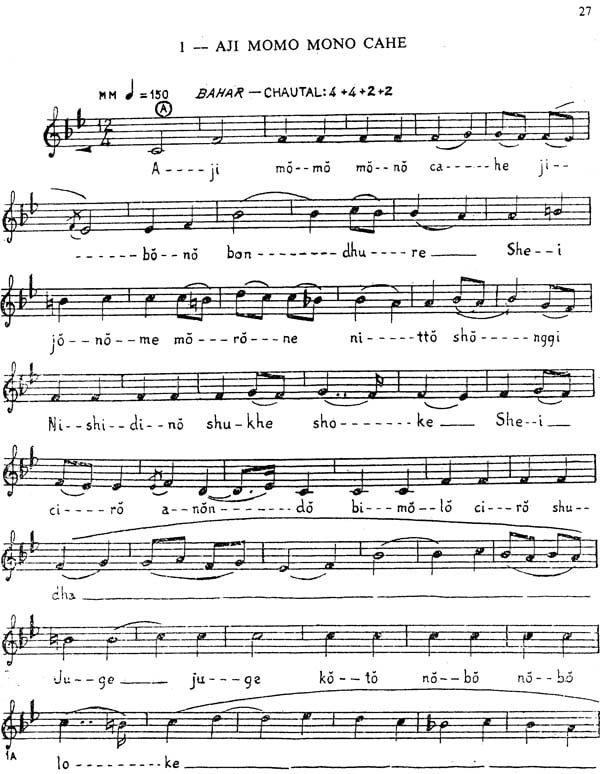
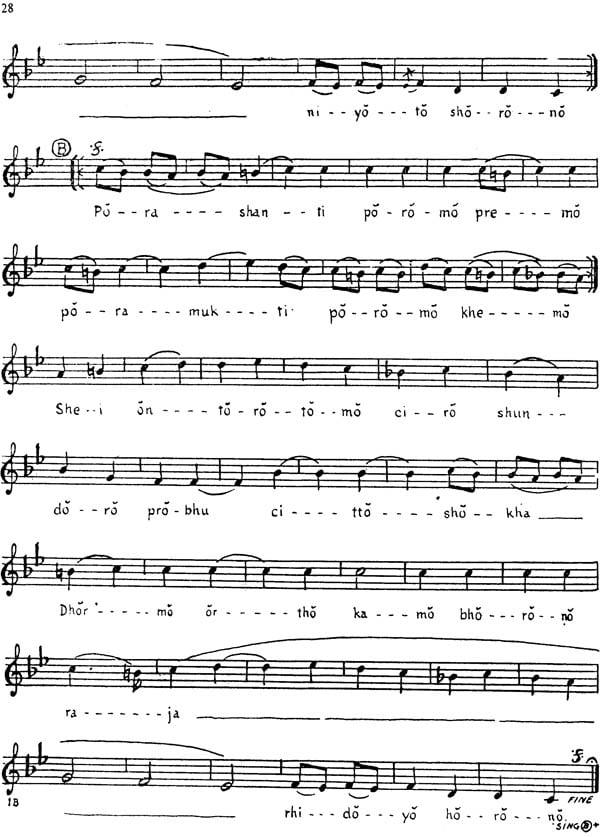
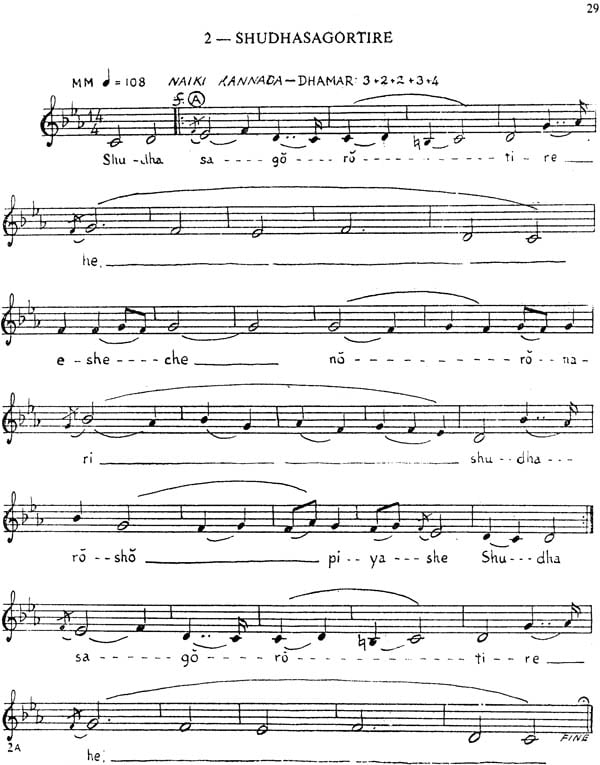
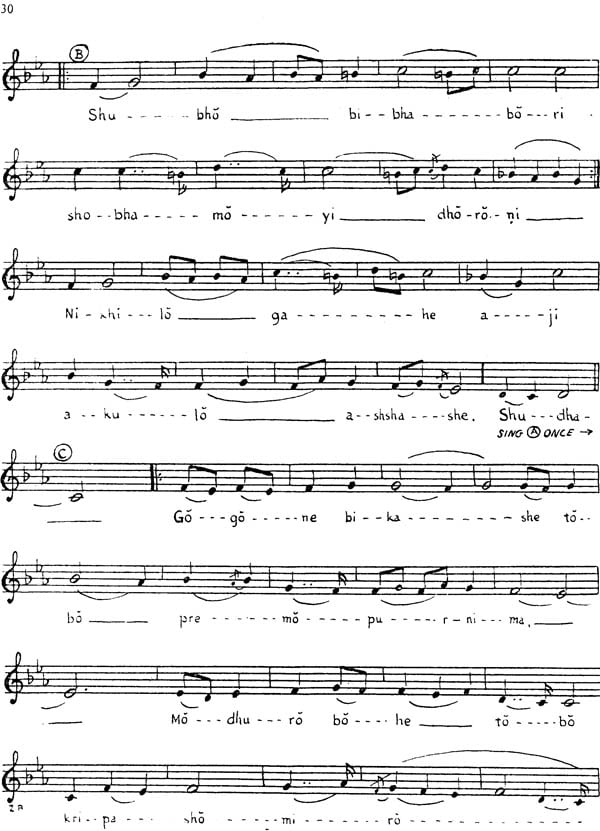
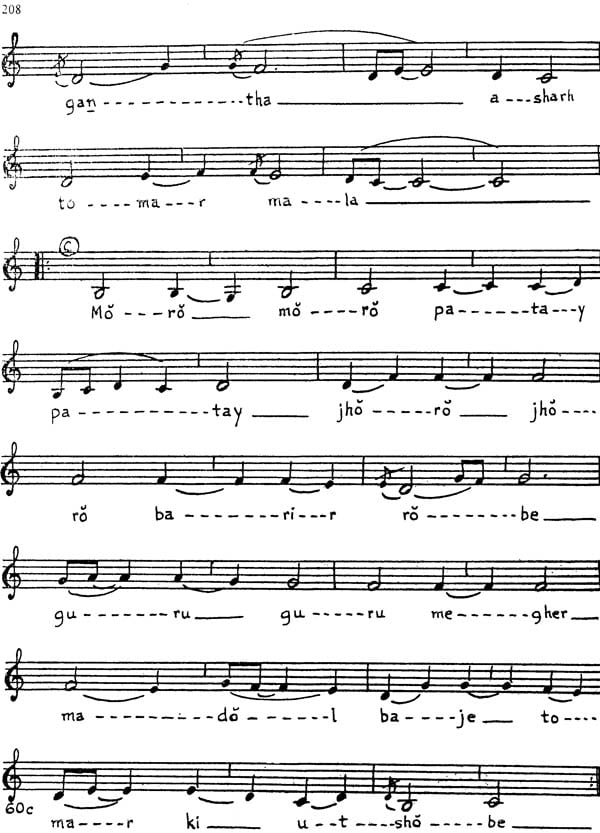
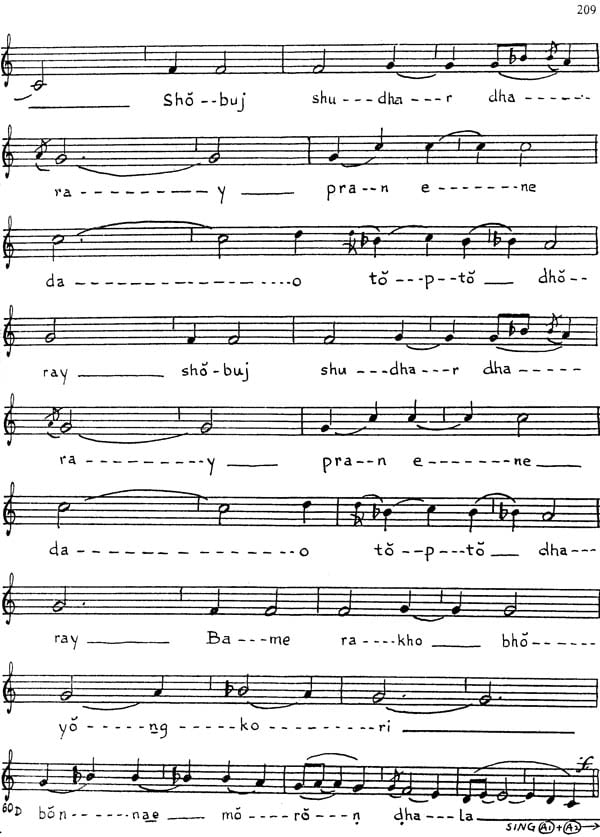
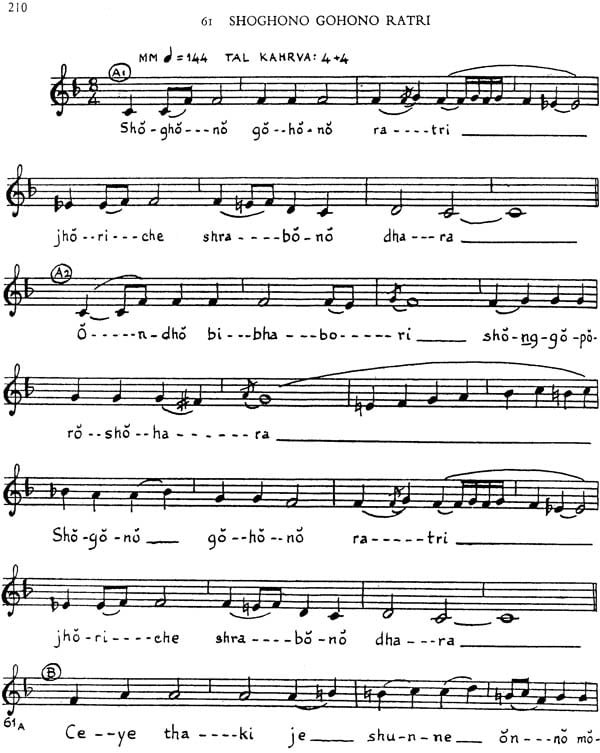
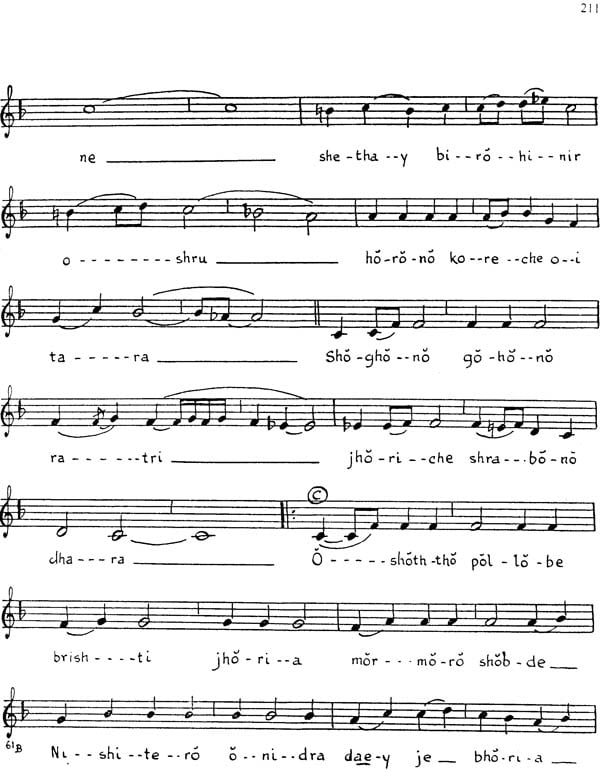
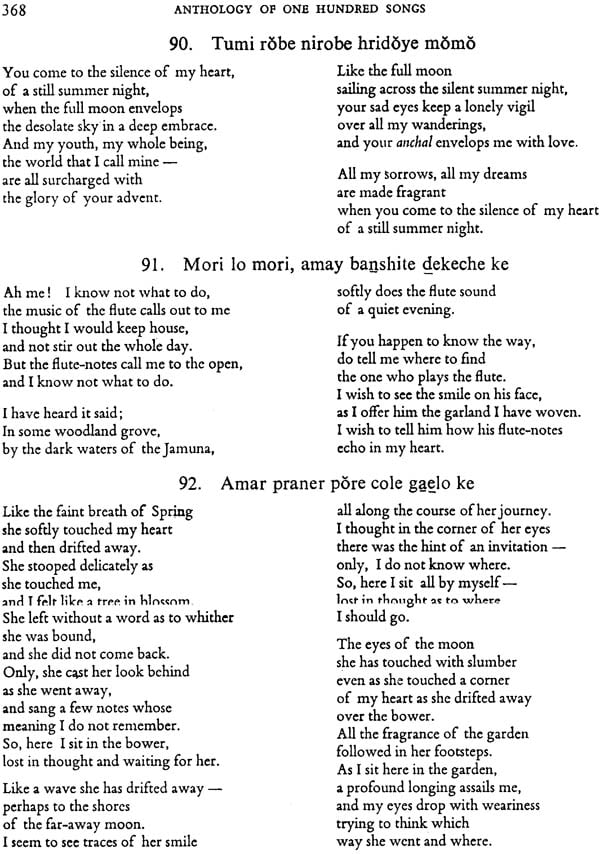
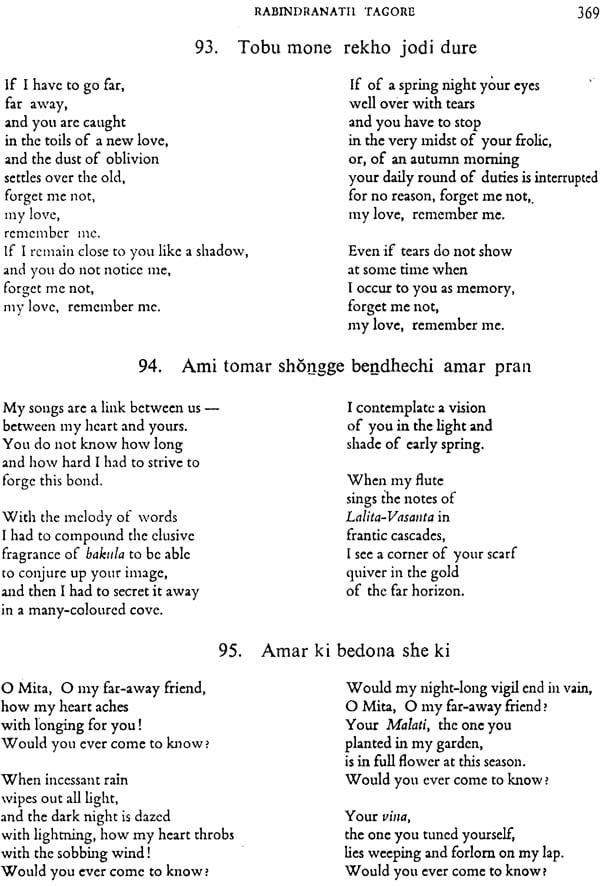
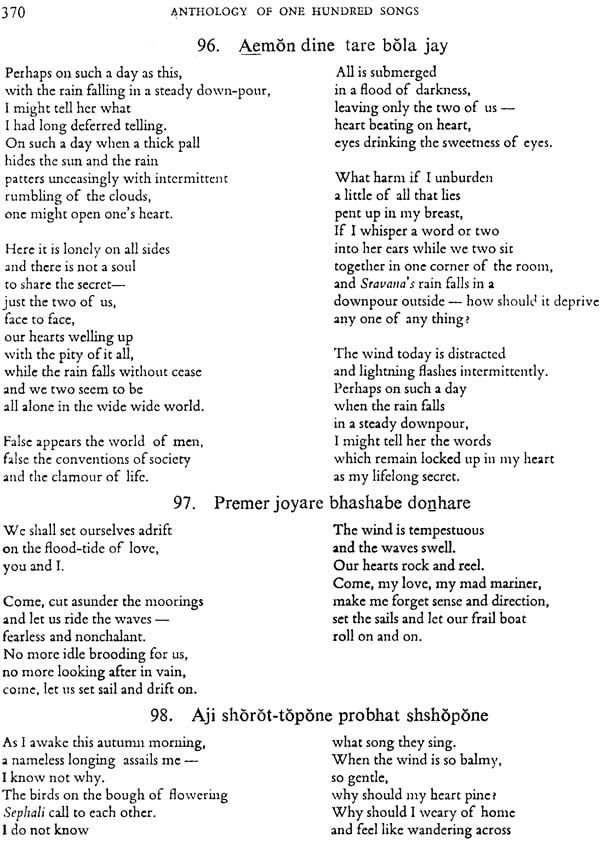
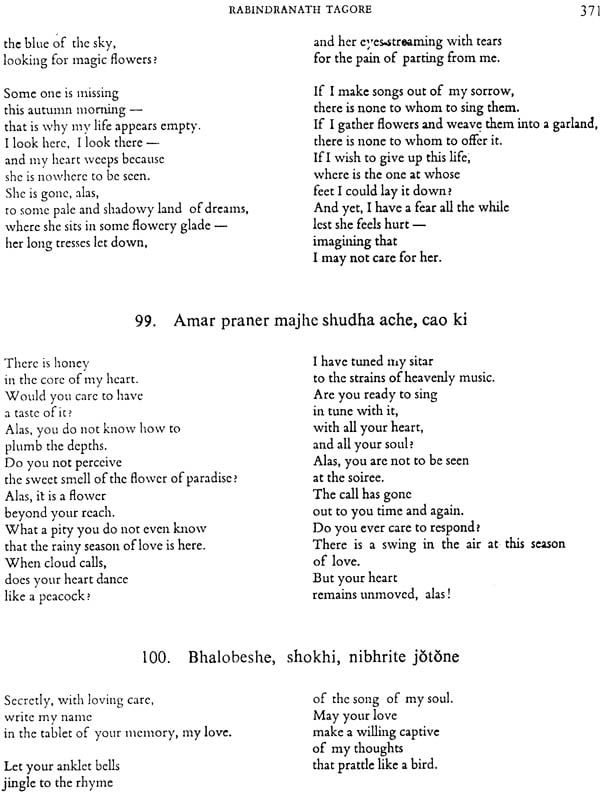
Delivery and Shipping Policy
- INTERNATIONAL SHIPPING
- Rs.1000-1100/kg
- ESTD. Delivery Time: 2-3 weeks (depending on location)
- Bubble Wrapped with Extra Padding
- NATIONAL SHIPPING
- NCR: Rs. 30/half kg
- Standard: Rs. 80/half kg
- Express shipments also available on Request
- ESTD. Delivery Time: Ranging from 1-4 days up to 7 business days (Depending on your choice of Delivery)
- TRACKING
- All orders; national or international, will be provided with a Tracking ID to check the status of their respective orders
- Depending on the Shipping Service, Tracking ID may be used on their respective tracking portals
Frequently Asked Questions (FAQs)
Domestic Shipping: 3-4 Days (after shipping)
International Shipping: 1-2 weeks (based on your location)
You will receive an email once your order has been shipped or you can email us if you didn't receive tracking details (info@mlbd.co.in)
Every book that we sell is the latest edition except all the rare books
Yes, we do provide free shipping, only on domestic orders (within India) above Rs.1500


